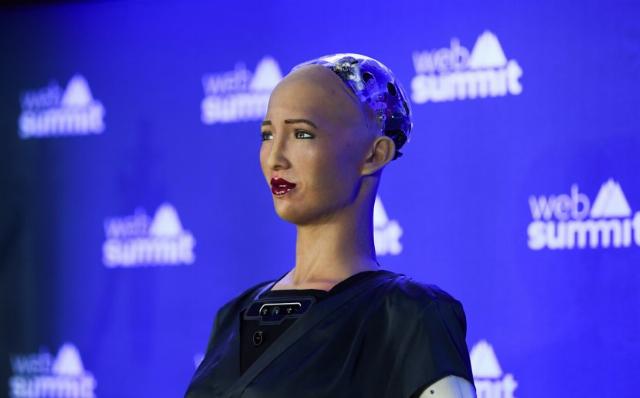The future is female (robots)?
The future of robots is mostly female — but not feminist. If algorithms with “the right stuff” are coursing through their circuitry, the fembots will yet be demure and deferential toward their male creators.
It’s socially divisive when confused feminists spew misandry like “the future is female.” It’s hardly worth a rebuttal, other than to remind that it’s mostly men who invent, build, rescue, and fix things. The feminists like to dwell in our buildings; travel along our infrastructure; and thrive in cozy, climate-controlled comfort — all beneficiaries of so-called male toxicity.
However, at least on the surface, there may now be an element of truth to their preposterous proposition about the future. One of the many things (underappreciated by feminists) that men create is robots, and they are gradually infiltrating our society. Most are decked with female characteristics.
Consider this: about 10% of Fortune 500 companies have a woman at the helm. Globally, it’s only about 5%. Yet the first experimental robot CEO assumes a female personage. Specifically, the Polish drinks company “Dictador” is ostensibly run by an A.I.-powered humanoid robot named Mika. The robot manifests as a woman with flowing blonde hair and pleasing curves.
Then there’s the “World’s Most Advanced Robot,” named Ameca. See her graceful gestures here.
Not only does Ameca have female tendencies, but she (her creators prefer the third-person pronoun “it”) clearly has a gentle female voice. She even winks, seems a bit flirty, and has plenty of melanin that adds “color” to her skin.
Humanoid robots (and online A.I. bots) often assume a female personage because they tend to come across as less menacing and very polite, which is important to those who prefer a personal touch. They may even be more “approachable,” with soft voices and pleasing digital dispositions that help with life management tasks. For example, they assume support roles like guides, maids, personal assistants, and virtual receptionists that females generally excel in.
But that doesn’t mean the future solely belongs to feminist fembots.
While the robots are mostly female, their creators are mostly male. This is partly because of the inarguable documentation that male students generally perform better on math and science tests than loquacious females, who generally do better with verbal tests. Despite all their mentorships and proactive corporate and government recruitment initiatives, women still lag men in STEM fields.
It’s hard to “be the future” when the fields that enable entrepreneurs to “imagineer” it (science, technology, engineering, math) are dominated by the other (yep, only two) sex.
So whom does the future belong to? Presuming that the robots don’t develop self-awareness and full blown artificial general intelligence (capabilities that rival those of humans), their creators will remain boss. Importantly, we can still turn them off.
Ameca represents the near-term future of humanoid robots who can mimic human gestures and conduct charming chitchat, thanks to her advanced sensors and actuators. Her boss is a male engineering entrepreneur named Morgan Roe, who led the team that created her.
I anticipate that Ameca’s progeny will be able to walk around. I envision they will even fetch my slippers and bring my coffee — without a bunch of feminist fembot back-chat.






